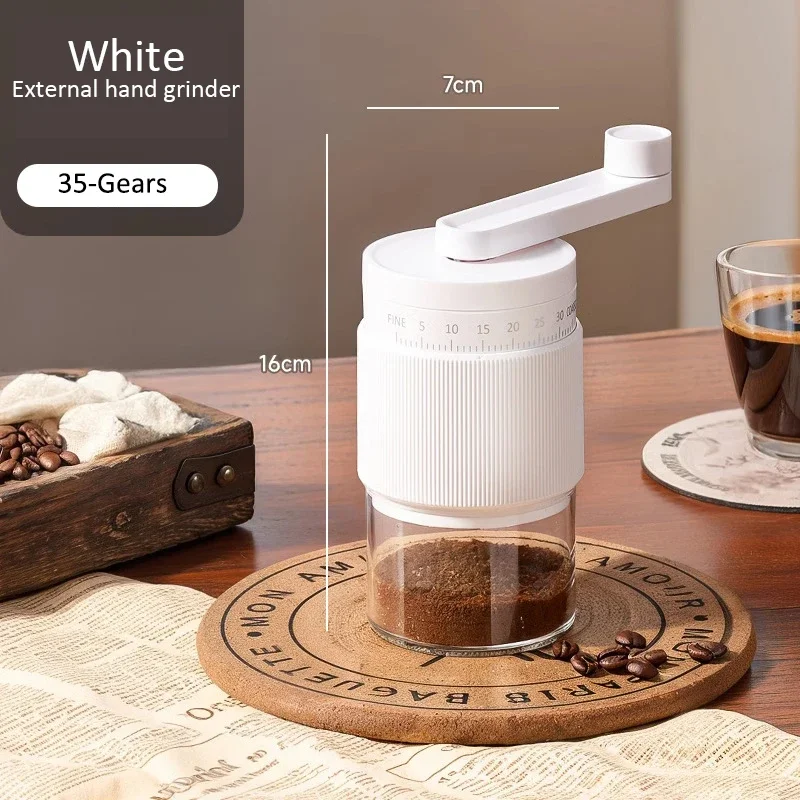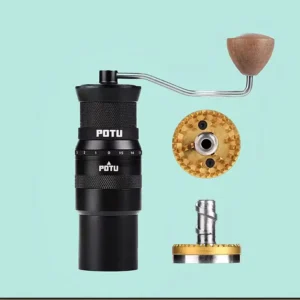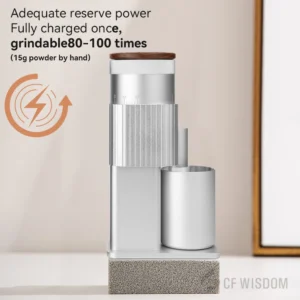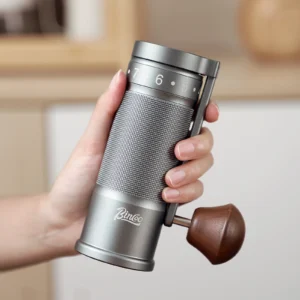Understanding the Critical Role of Espresso Grind Settings
The perfect espresso shot begins long before water meets coffee – it starts with the grind. Espresso grind settings are the foundation of extraction quality, acting as the primary variable that determines whether your shot will be exceptional or disappointing.
Grind size directly influences how water flows through your coffee puck:
– Too fine: Water struggles to pass through, resulting in over-extraction, bitter flavors, and potentially no flow at all (choking the machine)
– Too coarse: Water rushes through too quickly, creating under-extracted, sour, and watery espresso
This delicate balance is why baristas spend so much time “dialing in” – the process of finding the perfect grind setting for specific beans under specific conditions. Even minuscule adjustments measured in microns can dramatically transform your espresso’s flavor profile.
What makes this understanding crucial is that both manual and automatic grinders approach settings differently, though they share the same goal: consistent particle size that creates 20-30 second extraction times for a balanced 1:2 coffee-to-water ratio. Mastering espresso precision grind settings is essential knowledge for anyone serious about their coffee journey.
The Fundamentals of Espresso Grinder Mechanisms
To understand the differences between manual and automatic grinder settings, we must first grasp how these devices actually work. At their core, both types use burrs rather than blades to grind coffee beans. These burrs crush beans between two rough surfaces, creating more uniform particles essential for consistent espresso extraction.
The fundamental difference lies not in the grinding principle but in the power source and adjustment mechanisms. Manual grinders harness human power through a hand crank, while automatic grinders use electric motors. However, the burr systems they employ share similar characteristics:
Both typically feature either flat or conical burrs. Flat burrs grind beans between two parallel rings with cutting teeth, while conical burrs use a cone-shaped center burr that grinds against an outer serrated ring. Flat burr grinders for exceptional coffee are often preferred by professionals for their ability to create extremely consistent particle size.
The material of these burrs – typically ceramic or steel – impacts durability, heat generation, and grind quality. Steel burrs tend to be sharper and more precise but can transfer heat to beans during grinding. Ceramic burrs stay cooler but may be more brittle.
What truly distinguishes these grinder types is their adjustment systems. Both can employ stepped systems (with preset notches or clicks) or stepless systems (allowing infinite adjustment points). The implementation of these systems, however, varies dramatically between manual and automatic models, directly impacting the espresso extraction process.
Our manual coffee burr grinders collection showcases various adjustment systems designed specifically for precision espresso grinding.
Manual Grinder Settings: Precision Through Hand Adjustment
Manual espresso grinder settings offer a tactile, hands-on approach to grind adjustment. Most quality manual grinders use one of several common adjustment systems:
- Click/stepped adjustments: These provide audible and tactile feedback as you move between preset grind sizes
- Threaded adjustment rings: Allow you to loosen or tighten the distance between burrs by turning a ring
- Dial systems: Feature numbered or marked dials for more precise setting selection
The primary advantage of manual adjustment is the direct physical connection between your adjustments and the grinding mechanism. This tactile feedback creates an intuitive understanding of how small changes affect grind size – vital knowledge for espresso preparation.
High-quality manual grinders designed for espresso typically offer between 10-20 micro-adjustment steps within the espresso range alone. This allows for the fine-tuning necessary for proper extraction. However, entry-level models may provide fewer adjustment points, making dialing in more challenging.
One challenge with manual adjustment systems is reproducibility – returning to exact previous settings after making major changes. Some premium models address this with numerical indicators or reference marks, but many rely on the user to count clicks or remember positions.
Understanding the nuances of your specific grinder’s adjustment system is critical – our manual espresso grind setting guide provides detailed instructions for achieving optimal results with various manual adjustment mechanisms.
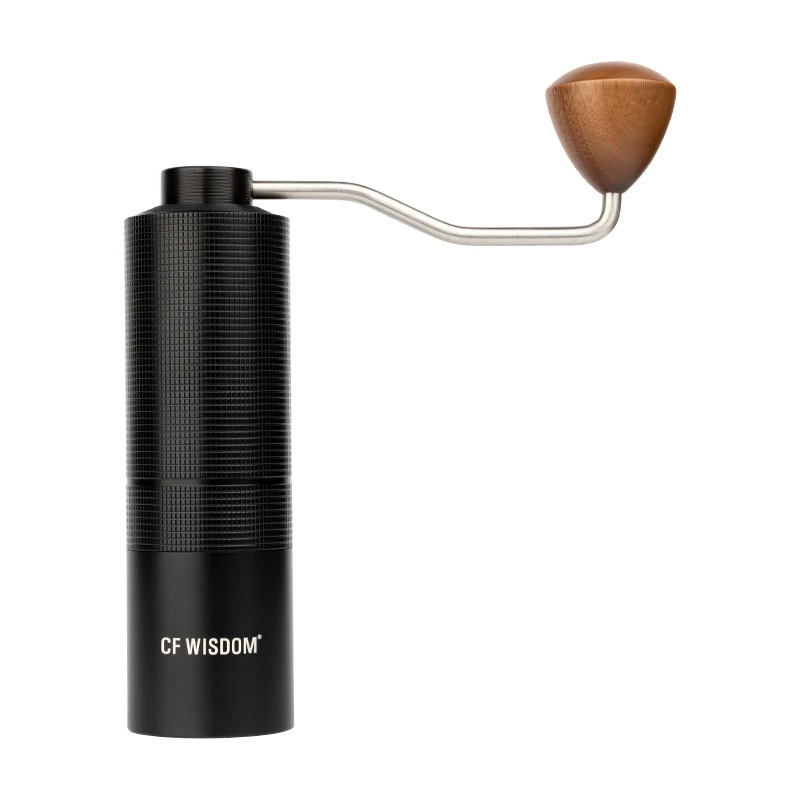
Automatic Grinder Settings: Electronic Precision and Convenience
Automatic espresso grinders approach settings with a focus on precision, repeatability, and user convenience. Their adjustment mechanisms typically fall into two main categories:
- Stepped systems: Feature predetermined grind settings, often with 20-40 distinct positions
- Stepless systems: Allow infinite adjustment within their range, with no preset positions
The interface for these adjustments varies widely between models. Some use analog controls with rotating collars or levers, while others implement digital displays with programmable presets. High-end models often employ worm drives or gear systems that translate small user inputs into micro-adjustments of the burr position.
What sets automatic grinders apart is their integration of grind settings with additional functionality:
– Timed dosing allows for consistent amounts of ground coffee
– Weight-based grinding stops automatically when reaching target dose
– Programmable presets store specific settings for quick switching
These features complement precise grind adjustment, creating a comprehensive system for espresso preparation. The finest automatic grinders can make adjustments in increments of hundredths of a millimeter, allowing for extremely precise tuning of extraction parameters.
While automatic grinders excel in precision and repeatability, they remove some of the tactile feedback present in manual systems. Users must rely on visual indicators and extraction results rather than physical sensation to understand their adjustments.
For those who appreciate the precision of hand grinding but need consistency across multiple shots, our precision manual grinder collection offers excellent alternatives to automatic models.
Precision and Consistency: Head-to-Head Comparison for Espresso
When evaluating manual versus automatic grinders specifically for espresso preparation, several key factors determine their performance:
| Factor | Manual Grinders | Automatic Grinders |
|---|---|---|
| Adjustment Range | Typically 5-15 settings within espresso range | Often 10-40+ settings within espresso range |
| Micro-adjustment Capability | Limited in entry-level, excellent in premium models | Superior in mid-range and premium models |
| Setting Retention | May shift during use, requires verification | Generally stable once set |
| Reproducibility | Challenging without numerical indicators | Excellent with digital presets |
| Consistency Between Doses | Can vary with user fatigue | Highly consistent with timed/weighted dosing |
For espresso specifically, the ability to make minute, precise adjustments is paramount. High-end models of both types can achieve excellent results, but they do so differently. Manual grinders require more skill and physical consistency from the user but can deliver remarkable precision in the right hands. Automatic grinders offer greater reproducibility and consistency, especially when preparing multiple shots.
Grind consistency – the uniformity of particle size – is another crucial factor. While many assume automatic grinders always win here, premium manual grinders with quality burrs can achieve comparable consistency for single doses. However, automatic grinders maintain this consistency regardless of volume or user fatigue.
Mastering perfect espresso through grind adjustment requires understanding these differences and choosing tools that match your preferences and workflow.
The Art of “Dialing In”: Practical Espresso Setting Techniques
“Dialing in” refers to the process of finding the optimal grind setting for a specific bean to achieve the perfect espresso extraction. This process is essential regardless of whether you’re using a manual or automatic grinder, though the approach differs slightly between the two.
Here’s a step-by-step approach to dialing in your espresso:
- Start with a baseline setting recommended for espresso on your specific grinder
- Prepare a shot using consistent parameters (dose weight, tamping pressure)
- Time the extraction from the moment you start the brew to when you reach your target volume
- Evaluate the flow rate, appearance, and most importantly, taste
- Make incremental adjustments based on results:
– If extraction is too fast (under 20 seconds) or tastes sour: Adjust finer
– If extraction is too slow (over 35 seconds) or tastes bitter: Adjust coarser
With manual grinders, make adjustments by counting clicks or noting the position of adjustment rings. With automatic grinders, use the numbered settings or digital display to track changes.
Be aware that variables like bean age, ambient humidity, and temperature affect optimal settings. Fresh beans typically require a coarser setting than older beans, and you’ll need to adjust slightly as beans age.
The key to successful dialing in is patience and methodical adjustment. Make only one change at a time and keep detailed notes on your results. For deeper understanding of this process, our definitive guide to espresso grind consistency provides advanced techniques for achieving perfect extraction.
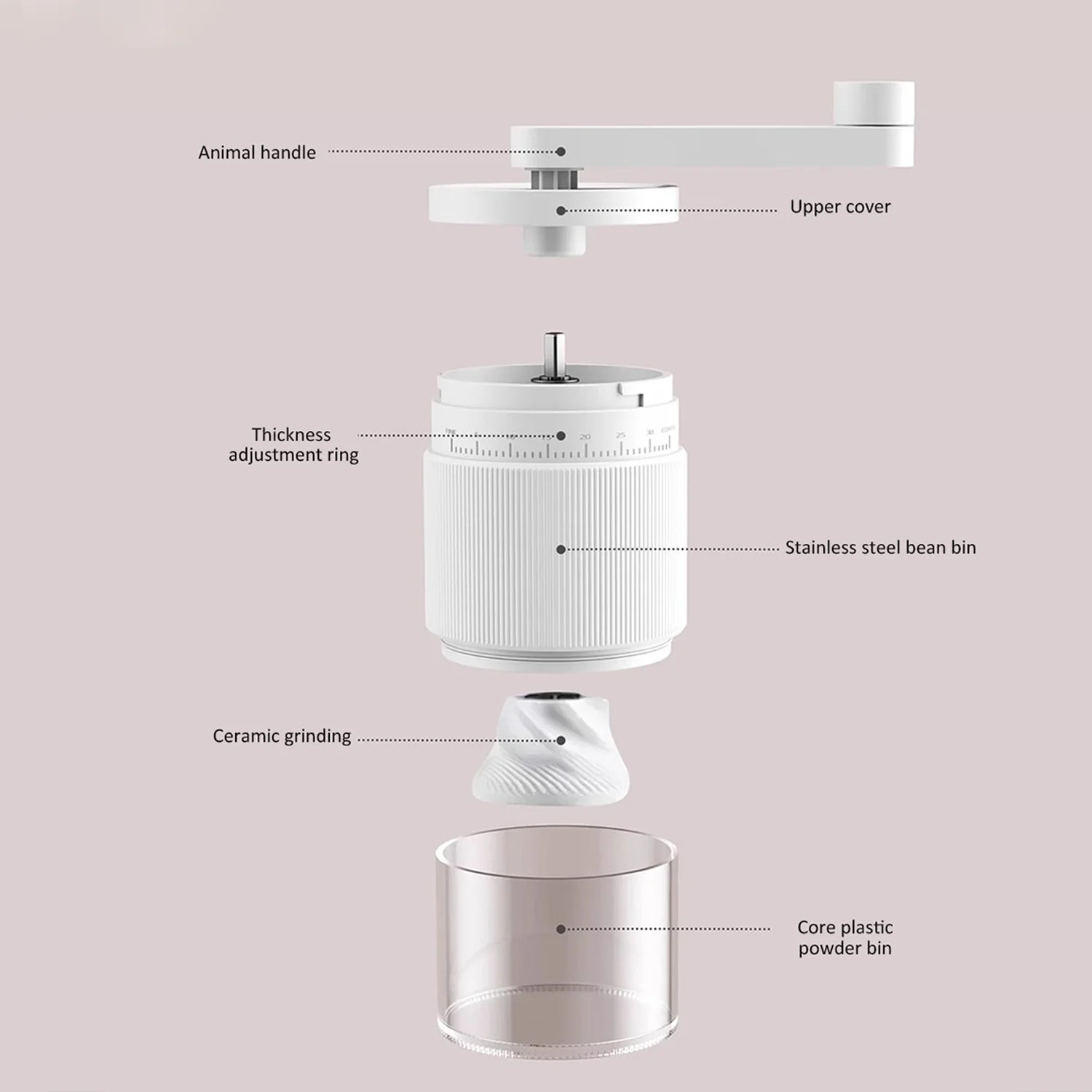
Stepped vs. Stepless Adjustment Systems for Espresso
The debate between stepped and stepless adjustment systems is fundamental to understanding espresso grinder settings, regardless of whether you’re considering manual or automatic options.
Stepped Systems:
Pros:
– Easy to return to previous settings
– Simple to use for beginners
– Clear, defined adjustment points
– Less likely to drift during grinding
Cons:
– Limited adjustment precision
– May not have a setting that’s exactly right for your beans
– Fewer options for fine-tuning extraction
Stepless Systems:
Pros:
– Infinite adjustment possibilities
– Perfect for dialing in specific beans
– Allows for micro-adjustments to address changing variables
– Superior for experimenting with extraction profiles
Cons:
– Harder to return to previous settings
– Steeper learning curve
– Can drift or be accidentally moved
While automatic grinders commonly feature both systems (with higher-end models favoring stepless), manual grinders traditionally used stepped systems with clicks or notches. However, premium manual grinders have increasingly adopted stepless systems to compete with their automatic counterparts in precision.
For espresso specifically, stepless adjustment is often preferred because the ideal grind size can fall between the preset steps of a clicked system. Even a difference of fractions of a millimeter can significantly impact extraction quality.
Our fine adjustment hand grinder collection features models with both stepped and stepless systems designed specifically for espresso precision.
Practical Considerations: Workflow and User Experience
Beyond technical specifications, the daily experience of adjusting your grinder has significant impact on your espresso workflow:
Time Efficiency:
– Manual grinders typically require 30-60 seconds to adjust settings, plus time to verify the change
– Automatic grinders allow adjustments in 5-10 seconds, with digital models offering instant preset selection
Physical Experience:
– Manual adjustments require direct interaction with the mechanism, providing tactile feedback
– Automatic adjustments feel more removed but offer easier repetition and less physical effort
Grind Retention When Changing Settings:
– Manual grinders generally have lower retention (0.1-0.5g) when changing settings
– Automatic grinders may retain 1-3g in the grinding chamber, requiring purging when making adjustments
Maintenance Considerations:
– Manual adjustment mechanisms have fewer points of failure and are often user-serviceable
– Automatic systems may require professional servicing if electronic components fail
For those who prepare multiple shots daily, the time savings and consistency of automatic adjustment become increasingly valuable. For occasional users who appreciate ritual and connection to the process, manual adjustment may enhance the experience rather than detract from it.
The ultimate espresso grind size chart can help you understand the target ranges for different machines, regardless of which grinder type you choose.
Fine Adjustment Hand Grinder, Precision Manual Grinder, Travel Coffee Grinder
Price range: $185.11 through $494.63 Select options This product has multiple variants. The options may be chosen on the product pageHand Burr Grinder, Hand Crank Coffee Grinder, Manual Espresso Grinder, Portable Coffee Grinder
Price range: $262.72 through $300.22 Select options This product has multiple variants. The options may be chosen on the product pageManual Burr Mill, Manual Coffee Grinder Stainless Steel, Manual Coffee Mill Grinder, Mechanical Coffee Grinder
Price range: $127.26 through $130.32 Select options This product has multiple variants. The options may be chosen on the product pageHand Burr Grinder, Manual Coffee Grinder Stainless Steel, Precision Manual Grinder
Price range: $183.64 through $187.52 Select options This product has multiple variants. The options may be chosen on the product page
Explore our manual espresso grinder collection to find options specifically designed for espresso preparation with intuitive adjustment systems.
Cost-Value Analysis: Budget Considerations and Options
The price differential between manual and automatic grinders with comparable grinding capabilities is substantial, making this a key decision factor for many coffee enthusiasts:
Entry-Level Espresso Capability:
– Quality manual grinders: $80-150
– Comparable automatic grinders: $200-350
Mid-Range Precision:
– Premium manual grinders: $150-300
– Comparable automatic grinders: $350-700
High-End Performance:
– Boutique manual grinders: $300-500
– Professional automatic grinders: $700-2000+
What drives this difference? Automatic grinders incorporate motors, electronics, and more complex mechanical systems that increase manufacturing costs. However, they also offer convenience features that save time and effort.
Value consideration extends beyond purchase price to longevity and maintenance. Quality manual grinders often feature simpler, more durable mechanisms that may last decades with minimal maintenance. Their burrs typically grind less coffee over their lifetime, extending useful service before replacement is necessary.
For those prioritizing grind quality over convenience at lower price points, high-end manual grinders often outperform entry-level automatic models in consistency and adjustment precision – critical factors for espresso preparation.

Matching Your Grinder to Your Espresso Journey
Finding the right espresso grinder means matching the tool to your unique coffee journey and lifestyle:
For Beginners:
– Manual grinders offer an educational experience and build understanding of how grind affects extraction
– Automatic grinders provide more consistent results while learning other espresso variables
For Daily Ritual Enthusiasts:
– Manual grinders enhance the sensory experience and connection to the process
– 1-3 shots per day works well with manual grinding workflow
For Household Baristas:
– Automatic grinders excel when preparing multiple shots consecutively
– Families or frequent entertainers benefit from the speed and consistency
For Travelers and Small Spaces:
– Manual grinders offer portability and compact storage
– No electrical requirements make manual options versatile for different environments
The best choice also depends on your other equipment. Paired with a high-end espresso machine, an automatic grinder offers comparable precision. With simpler espresso makers, the control offered by quality manual grinders may help compensate for limitations in the brewing equipment.
When troubleshooting espresso grind issues, having granular control over settings becomes invaluable, making precision adjustment capabilities a priority regardless of which type you choose.
FAQ: Common Questions About Espresso Grinder Settings
Can manual grinders achieve espresso-fine grinds?
Yes, quality manual grinders with burr systems can absolutely achieve espresso-fine grinds. Look for models specifically designed for espresso, which feature precision adjustment mechanisms and appropriate burr geometry.
How often do settings need adjustment for espresso?
Espresso settings typically need minor adjustments daily, as factors like humidity, bean age, and ambient temperature affect optimal grind size. Even the same beans may require different settings from day to day.
Do grind settings change as beans age?
Yes, as beans age, they typically require a finer grind setting to achieve the same extraction time. Fresh beans release more CO2 during brewing, creating resistance that slows extraction, whereas older beans need finer grinding to create proper resistance.
Is it easier to learn on manual or automatic grinders?
Many enthusiasts find manual grinders provide better learning experiences because they create a direct connection between adjustment and result. However, automatic grinders allow beginners to focus on other variables while maintaining consistent grinding.
Can budget grinders produce good espresso?
Quality budget manual grinders can produce excellent espresso, often outperforming automatic grinders at the same price point. The key factors are burr quality and adjustment precision rather than power source.
For those seeking quality manual options specifically designed for espresso preparation, our manual coffee grinder for espresso collection offers excellent starting points at various price levels.

